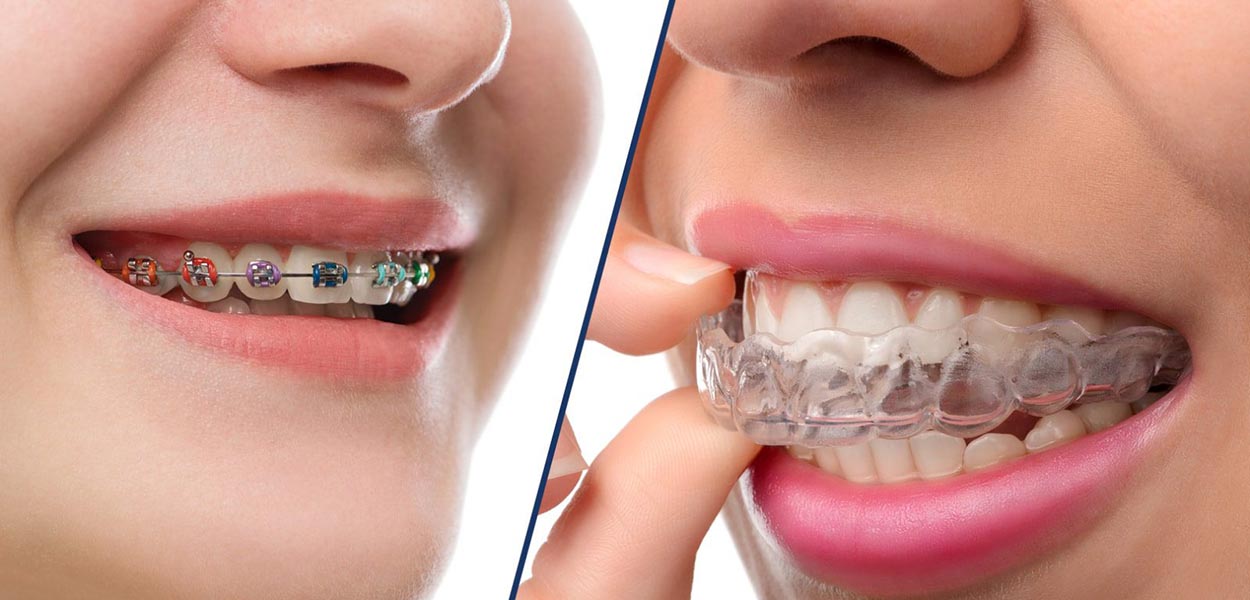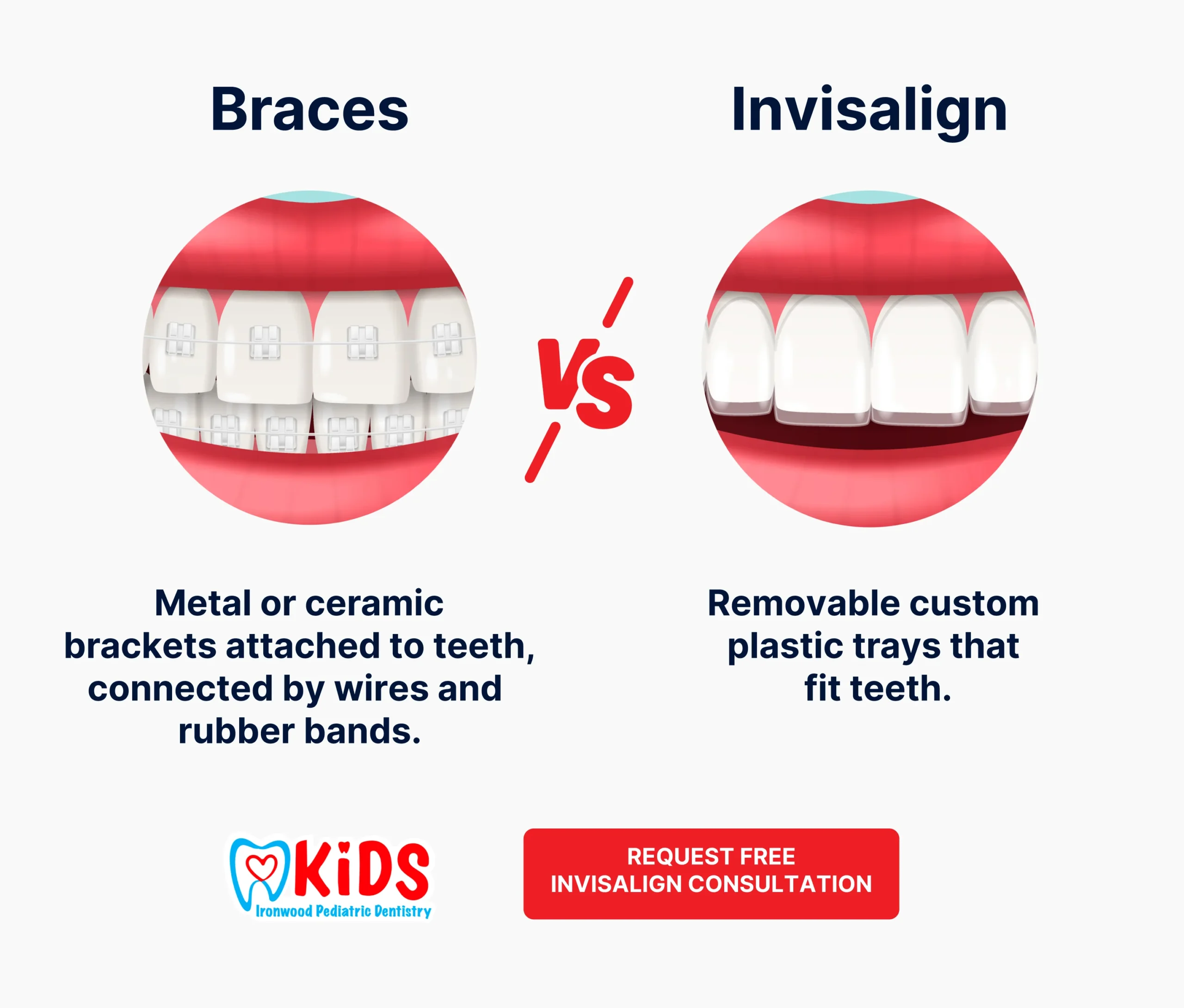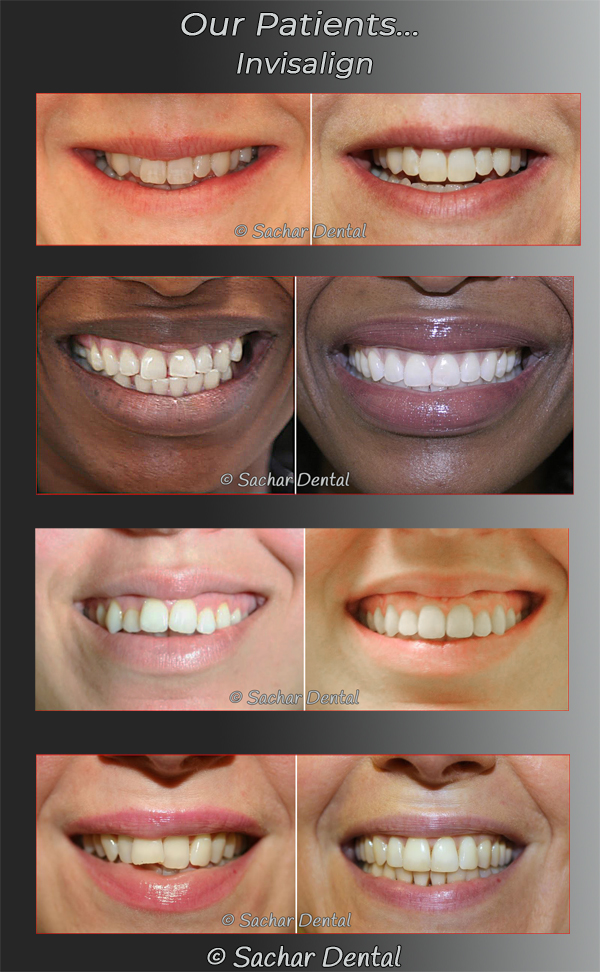Frequently Asked Questions About Invisalign: Everything You Need to Know
Frequently Asked Questions About Invisalign: Everything You Need to Know
Blog Article
Invisalign vs. Traditional Dental braces: Which Alternative Is Right for You?
When thinking about orthodontic therapy, the selection in between Invisalign and standard braces provides a number of important factors that warrant mindful analysis. Invisalign offers a discreet option with detachable aligners, while typical dental braces supply an extra noticeable yet effective service for severe misalignment. Each choice incorporates distinctive benefits and drawbacks associated with visual appeals, comfort, therapy period, and price. Recognizing these subtleties is crucial for making an informed decision that aligns with your personal preferences and lifestyle. The question remains: which option will best fulfill your orthodontic needs and expectations?
Overview of Therapy Alternatives

In comparison, traditional braces include metal brackets and cords that are bound to the teeth. This approach applies constant stress in time to attain alignment. While efficient for intricate orthodontic issues, standard dental braces require regular visits for modifications and can posture challenges in preserving dental health as a result of the difficulty of cleansing around brackets and cables.
Both options have their advantages, and the selection commonly rests on specific dental conditions, way of life preferences, and individual compliance. Eventually, getting in touch with an orthodontic professional is essential for figuring out one of the most ideal treatment strategy customized to specific demands. Recognizing the subtleties of each alternative can dramatically affect the total success of orthodontic treatment.
Visual Factors To Consider
A significant variable affecting the choice in between Invisalign and traditional dental braces is the aesthetic appeal each therapy provides. Invisalign aligners are crafted from clear plastic, making them virtually unseen when used.
In contrast, traditional dental braces consist of steel brackets and cords, which can be extra visible. While advancements in orthodontic modern technology have brought about the advancement of smaller sized brackets and colored elastics, traditional dental braces still maintain a more obvious profile. For some people, the exposure of dental braces may deter them from seeking essential treatment.
Inevitably, the choice in between Invisalign and standard dental braces may pivot on personal choices concerning looks. Clients that prioritize discretion commonly favor Invisalign, while those that are much less worried regarding exposure might choose conventional dental braces. Comprehending the visual implications of each alternative is crucial for making a notified choice that lines up with one's way of living and choices.
Comfort and Convenience

In terms of convenience, Invisalign aligners are detachable, making it possible for people to appreciate their preferred foods without restriction and maintain optimal dental health. Brushing and flossing are streamlined, as the aligners can be secured during these routines, whereas standard braces call for careful steering around braces and cables.
In contrast, typical braces demand regular changes, making them less hassle-free for those with busy timetables. Overall, the convenience and ease of Invisalign make it an attractive selection for many people seeking orthodontic therapy.
Therapy Duration and Efficiency
While both Invisalign and traditional braces are efficient in dealing with oral misalignments, the duration of therapy can differ significantly between both alternatives. Normally, Invisalign therapy can take anywhere from 12 to 18 months, relying on the intricacy of the instance. The clear aligners function by gradually shifting teeth into their preferred settings, and normal follow-ups with an orthodontist aid ensure development stays on course.
On the other hand, conventional dental braces usually require a longer commitment, typically ranging from 18 months to three years. This is because of their set nature and the usage of cords and braces, which can be more effective for severe misalignments and complex situations (Invisalign). The treatment efficiency of conventional braces is well-documented, as they enable exact changes and better control over tooth activity
Eventually, the option between Invisalign and conventional braces may rest on both the awaited treatment period and the details dental issues handy. Consulting straight from the source with an orthodontist is crucial, as they can give customized recommendations based upon specific demands, making sure the selected approach lines up with preferred results and go durations.
Expense Contrast and Insurance Policy Alternatives
Cost plays a substantial duty in the decision-making process for individuals considering orthodontic therapy, whether choosing Invisalign or conventional braces. Generally, the price of Invisalign ranges from $3,000 to $8,000, while conventional dental braces typically cost between $2,000 and $6,000. Aspects influencing these expenses include the complexity of the situation, the duration of treatment, and geographical area.
Several dental insurance plans provide partial protection for orthodontic treatments, but the specifics can differ commonly. Generally, conventional braces may be more regularly covered by insurance policy plans compared to Invisalign, which some insurance firms categorize as an aesthetic procedure.
Additionally, several orthodontic practices supply adaptable repayment plans, making both treatment alternatives extra available. Clients need to inquire concerning prospective funding choices and discounts for in advance payments. Examining the complete price, including insurance policy advantages and repayment strategies, is essential for making a notified choice that lines up with both visual choices and budget factors to consider.

Conclusion
In summary, the option in between Invisalign and typical braces depends upon numerous elements, consisting of visual choices, comfort, treatment duration, and cost. Invisalign offers a discreet, detachable alternative that helps with dental hygiene and nutritional adaptability, while standard dental braces might be extra suitable for complicated dental problems and frequently come at a reduced cost point. Eventually, consultation with an orthodontist is vital to evaluate individual situations and determine one of the most ideal therapy alternative for attaining ideal dental alignment.
When taking into consideration orthodontic treatment, the selection between Invisalign and typical dental braces offers several important variables that warrant cautious analysis.Comparing Invisalign and conventional dental braces exposes distinct treatment choices for orthodontic improvement.While both Invisalign and typical dental braces are reliable in dealing with dental misalignments, the duration of treatment can vary significantly between the 2 choices.Price plays a significant function in the decision-making process for people considering orthodontic therapy, whether deciding for Invisalign or traditional braces.In recap, the option in between Invisalign and typical braces pivots on several variables, consisting of visual their explanation choices, comfort, therapy duration, and price.
Report this page